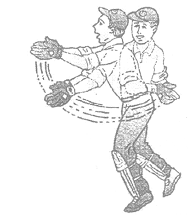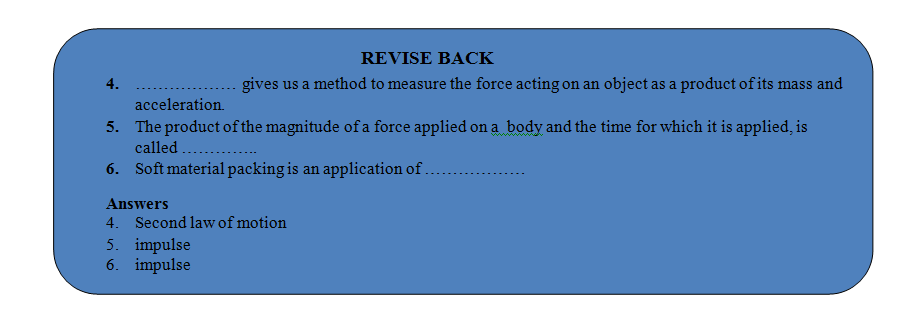
APPLICATIONS OF IMPULSE EQUATION IN DAILY LIFE
Force Laws of Motion of Class 9
Catching the ball by a cricketer:
While catching a fast moving cricket ball, the player moves his hands backward after catching the ball. By moving his hands, the cricketer takes longer time. As a result a small force is applied on the ball. In reaction, the ball also applies lesser force and the hands of the player are not injured.

Jumping on heap of sand:
If someone jumps from a height on a heap of sand below, his feet move inside the sand very slowly. His momentum changes slowly requiring a lesser force of action from the sand. The man is not injured.
Jumping down of a passenger from a moving train or bus :
A passenger sitting in a moving train or bus has momentum, When he jumps down and stands on platform or road, his momentum becomes zero. If he jumps down suddenly from the moving train or bus and tries to stand on his feet, his body will fall forward due to inertia of motion. He will be injured. He is advised to run over some distance on the platform or road along with (in direction f) the train or bus. This will slow down his rate of change of linear momentum and lesser force will be involved.
Springs in vehicles :
The vehicles are fitted with springs to reduce the hardness of the shock. When vehicles more over an uneven road, they experience impulses exerted by the road. The springs increase the duration of impulse and hence reduce the force.
Springs in vehicles :
The seats are also fitted with springs to reduce their hardness. When we sit on them all of a sudden, the seats are compressed. The compression increases duration of our coming to rest of the seat. They reaction force of seats become negligible.
Soft material packing :
China and glass wares are packed with soft material when transported. They collide during transportation but soft packing material slows down their rate of change of momentum. The force of impact is reduced and the items are not broken.
Atheists:
Athletes are advised to come to stop slowly after finishing a fast race. In general, all changes of momentum must be brought slowly to involve lesser force of action and reaction to avoid injury.










